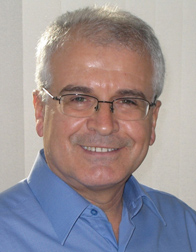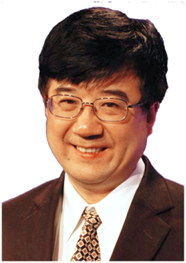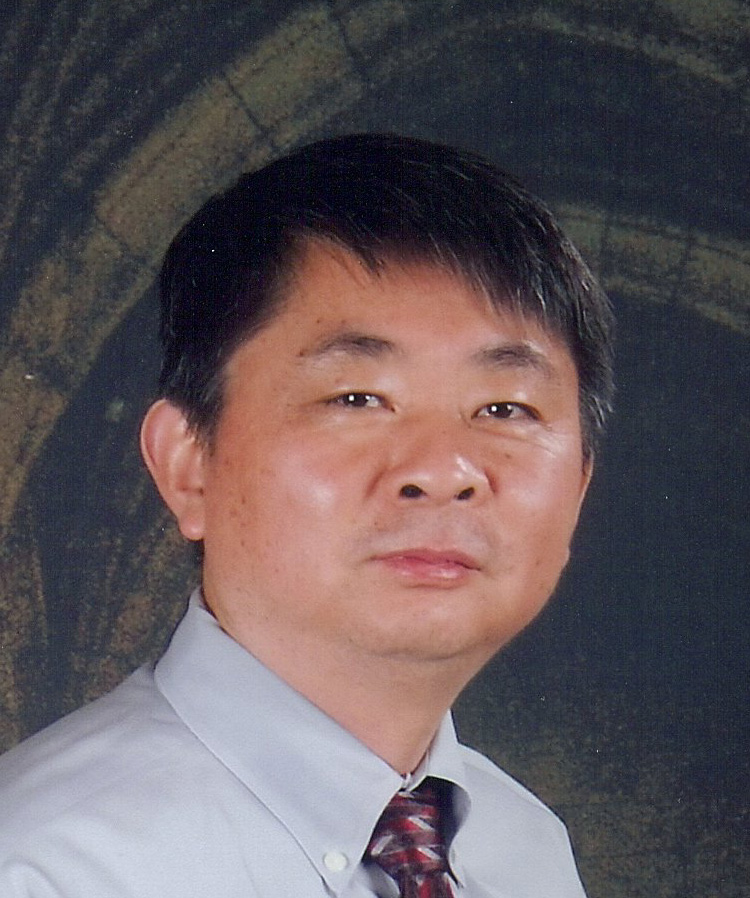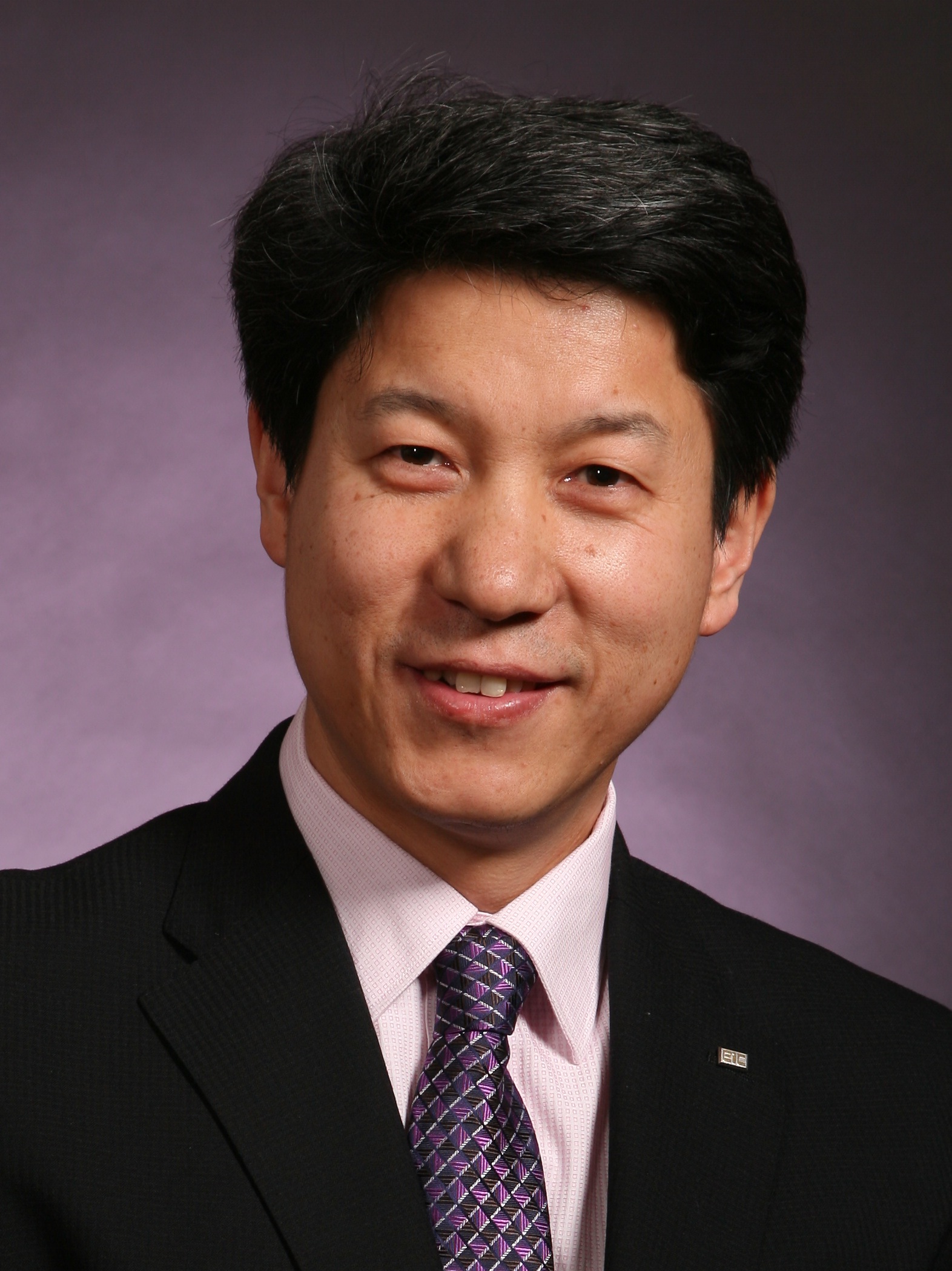
Prof. Hikmet SARI
Department Head
SUPÉLEC
Telecommunications Department
Plateau de Moulon
Date: July 28, Thursday
Time: 9:00-9:45
Room: Wufu Hall, Wufu Building 1F
Multiple Access and Power Efficiency in Wireless Communications
Abstract: In this talk, we focus on power efficiency which has been a major challenge in wireless communications for decades. We first give a brief review of some major advances in multicarrier transmission and multiple access techniques, which shaped the development of recent wireless communications standards. The review includes the development of OFDM and single-carrier transmission with frequency-domain equalization (SC-FDE) as well as the birth of OFDMA and of single-carrier FDMA (SC-FDMA), which were adopted by the Mobile WiMAX and the 3GPP LTE standards. Next, we address the nonlinear distortion problems caused by the nonlinear characteristics of the high-power amplifier (HPA) used at the transmitter in wireless communications systems and describe the various techniques devised to compensate for this phenomenon in single-carrier and multicarrier transmission. We emphasize the fact that the optimum operating point of the power amplifier cannot be always achieved in practice due to the stringent spectral masks imposed. We describe ideal signal predistortion that is applicable to both single-carrier and multicarrier systems and then we discuss peak-to-average power ratio (PAPR) reduction for multicarrier systems. We point out an important result that the gain achieved in terms of PAPR does not directly translate in terms of transmitted signal power.
Biography: Hikmet Sari is currently Professor and Head of the Telecommunications Department at CentraleSupelec and Chief Scientist of Sequans Communications. Previously, he held various research and managerial positions at Philips, SAT (SAGEM Group), Alcatel, Pacific Broadband Communications, and Juniper Networks. He received his Engineering Diploma and Ph.D. from the ENST, Paris, and the Habilitation degree from the University of Paris-Sud. His distinctions include the IEEE Fellow Grade and the Andre Blondel Medal in 1995, the Edwin H. Armstrong Award in 2003, the Harold Sobol Award in 2012, and election to the European Academy and to the Science Academy of Turkey in 2012.
Dr. Sari has served the IEEE Communications Society in numerous volunteer and leadership positions including Vice President – Conferences, Distinguished Lecturer, Member of the IEEE Fellow Evaluation Committee, Member of the Awards Committee, Member of several Technical Committees, Chair of the GITC, Chair of the Communication Theory Symposium of ICC 2002, Technical Program Chair of ICC 2004, Executive Chair of ICC 2006, General Chair of PIMRC 2010, General Chair of WCNC 2012, Executive Chair of WCNC 2014, Editor of the IEEE Transactions on Communications, Associate Editor of the IEEE Communications Letters, and Guest Editor of IEEE JSAC. Presently, he is also serving as Executive Co-Chair of ICC 2016 and Executive Chair of ICC 2017.
Prof. Geoffrey Ye Li
Georgia Institute of Technology, US
IEEE Fellow
Date: July 28, Thursday
Time: 9:45-10:30
Room: Wufu Hall, Wufu Building 1F
LTE on Unlicensed Band
Abstract: Future 5G cellular networks are facing the challenging task on increasing their capacity dramatically. Despite some cutting-edge capacity-approaching techniques, the limited licensed spectrum is still a major bottleneck for capacity improvement. To tackle this issue, a new standard has been developed within 3GPP for LTE systems, currently on the licensed bands, to operate on the unlicensed bands, which is called LTE on unlicensed bands (LTE-U). LTE has many advanced techniques, which can be exploited in the unlicensed bands to achieve a high spectral efficiency. However, the unlicensed bands are currently occupied by the widely-deployed WiFi networks. The major challenge on LTE-U is how to design fair and efficient coexistence mechanisms between LTE and WiFi networks. In this talk, we will first discuss traditional traffic offloading, resource sharing, and hybrid of the both for LTE users to optimally exploit unlicensed bands while guaranteeing of the QoS of the existing WiFi users. To improve both the LTE and WiFi users simultaneously and achieve a win-win situation, we then provide a novel traffic offloading strategy, which is just opposite to the traditional one and offloads some WiFi users to the LTE networks and at the same time relinquishes some unlicensed bands to LTE-U. Since the unlicensed bands are usually operated less energy-efficiently than the licensed ones due to the higher carrier frequency of the unlicensed bands and larger pass-loss, we also present a framework for energy-efficiency (EE) optimization in LTE-U. We establish a criterion to determine whether the EE of the LTE system can be improved with the help of the unlicensed bands. Based on the criterion, we then develop a joint licensed and unlicensed resource allocation algorithm to maximize the EE of each LTE small cell base station.
Biography: GEOFFREY YE LI (S’93-M’95-SM’97-F’06) received his B.S.E. and M.S.E. degrees in 1983 and 1986, respectively, from the Department of Wireless Engineering, Nanjing Institute of Technology, Nanjing, China, and his Ph.D. degree in 1994 from the Department of Electrical Engineering, Auburn University, Alabama.
He was a Teaching Assistant and then a Lecturer with Southeast University, Nanjing, China, from 1986 to 1991, a Research and Teaching Assistant with Auburn University, Alabama, from 1991 to 1994, and a Post-Doctoral Research Associate with the University of Maryland at College Park, Maryland, from 1994 to 1996. He was with AT&T Labs – Research at Red Bank, New Jersey, as a Senior and then a Principal Technical Staff Member from 1996 to 2000. Since 2000, he has been with the School of Electrical and Computer Engineering at Georgia Institute of Technology as an Associate Professor and then a Full Professor. He is also holding the Cheung Kong Scholar title at the University of Electronic Science and Technology of China since 2006.
His general research interests include statistical signal processing and communications, with emphasis on cross-layer optimization for spectral- and energy-efficient networks, cognitive radios and opportunistic spectrum access, and practical issues in LTE systems. In these areas, he has published over 300 refereed journal and conference papers in addition to 26 granted patents. His publications have been cited over 21,000 times and he has been recognized as the World’s Most Influential Scientific Mind, also known as a Highly-Cited Researcher by Thomson Reuters. He has been involved in editorial activities for about 20 technical journals for the IEEE Communications and Signal Processing Societies. He organized and chaired many international conferences, including technical program vice-chair of IEEE ICC’03, technical program co-chair of IEEE SPAWC’11, general chair of IEEE GlobalSIP’14 and technical program co-chair of IEEE VTC’16 (Spring). He has been awarded an IEEE Fellow for his contributions to signal processing for wireless communications since 2006, and won 2010 Stephen O. Rice Prize Paper Award and 2013 WTC Wireless Recognition Award from IEEE Communications Society. He also received 2013 James Evans Avant Garde Award and 2014 Jack Neubauer Memorial Award from IEEE Vehicular Technology Society. Recently, he won 2015 Distinguished Faculty Achievement Award from the School of Electrical and Computer Engineering, Georgia Tech.

Dr. Wen Tong
Huawei Fellow
CTO, Wireless Network, Huawei Technologies Co., Ltd.
Date: July 29, Friday
Time: 9:00-9:45
Room: Wufu Hall, Wufu Building 1F
5G is Coming
Abstract: It is envisioned that 5G will embrace machine to machine and machine to human communication in addition to human to human communication. To enable this vision, extreme high throughput, ultra low latency/high reliability and massive connectivity are the design target of 5G. This talk will present the framework and a set of enabling technologies to build such a system including some latest Huawei’s field trial efforts and results. In addition, a high level view of standardization efforts will be given to provide a roadmap toward the commercialization of 5G system.
Biography: Dr. Wen Tong is the Huawei Fellow, Head of Huawei Wireless Research, CTO, Huawei Wireless. Prior to joining Huawei in March 2009, Dr. Tong was the Nortel Fellow and global head of the Network Technology Labs at Nortel. He joined the Wireless Technology Labs at Bell Northern Research in 1995. He had pioneered fundamental technologies from 1G to 4G wireless with 350 granted US patents. Since 2010, Dr. Tong is the vice president of Huawei wireless research. In 2011, He was appointed the Head of Communications Technologies Labs of Huawei, he spearhead to lead Huawei’s 5G wireless research and development. Dr. Tong was elected as a Huawei Fellow and an IEEE Fellow. In 2014, he was the recipient of IEEE Communications Society Industry Innovation Award for “the leadership and contributions in development of 3G and 4G wireless systems”. Dr. Tong serves as Board of Director of WiFi Alliance and he is the fellow of Canadian Academy of Engineering.
Dr. Zhisheng Niu
Tsinghua University, China
IEEE Fellow, IEICE Fellow
Date: July 29, Friday
Time: 9:45-10:30
Room: Wufu Hall, Wufu Building 1F
A Hyper Cellular Architecture for 5G
Abstract: Cellular concept was invented to improve the spectrum efficiency by spectrum reuse and has contributed a lot for the explosive deployment of today’s mobile communication industry. As mobile data and video traffic is fast growing, the next-generation mobile communication (5G) networks are expected to further provide 10-fold more capacity than 4G mobile networks with the limited spectrum as well as energy resources. To deal with this challenge, the traditional physical- and MAC-layer capacity-enhancement approaches are no more sufficient and efficient. A system- or network-level approach is needed, including rethinking about the existing cellular structure. On the other hand, cellular networks are transforming from just a mobile communication platform to a smart information infrastructure on which more and more always-online type of traffic (e.g., short but frequent signaling packets of various social networks, sensing information of smart earth and smart community, control packets in cooperative heterogeneous wireless networks) need to be handled in an energy-efficient way. As a result, the existing cellular framework should be revisited.
In this talk, we propose a new cellular framework, named hyper-cellular architecture (HCA), aiming at increasing the whole network capacity by more than 10-fold based on the existing limited spectrum and energy resources as well as accommodating ever-increasing always-online traffic in a more energy-efficient way. The key idea here is to separate the coverage of control signals from the coverage of data signals so that the data coverage can be more elastic in accordance with the dynamics of traffic needs and QoS requirements. This can be considered as the further extension of the existing C-RAN concept and one of the key candidate technologies for 5G mobile communications systems. Some preliminary results have shown that this new paradigm has a great potential in the capacity enhancement and energy savings. Its software-defined implementation through the convergence of virtual BS and edge cloud technologies will also be discussed.
Biography: Zhisheng Niu graduated from Beijing Jiaotong University, China, in 1985, and got his M.E. and D.E. degrees from Toyohashi University of Technology, Japan, in 1989 and 1992, respectively. During 1992-94, he worked for Fujitsu Laboratories Ltd., Japan, and in 1994 joined with Tsinghua University, Beijing, China, where he is now a professor at the Department of Electronic Engineering. His major research interests include queueing theory, traffic engineering, mobile Internet, radio resource management of wireless networks, and green communication and networks.
Dr. Niu has been an active volunteer for various academic societies, including Director for Asia-Pacific Board (2008-09), Director for Conference Publications (2010-11), and Chair of Emerging Technology Committee (2014-15) of IEEE Communication Society. He also served as a distinguished lecturer (2012-15) of IEEE Communication Society and a distinguished lecturer (2014-16) of IEEE Vehicular Technologies Society. Dr. Niu received the Outstanding Young Researcher Award from Natural Science Foundation of China in 2009 and the Best Paper Award from IEEE Communication Society Asia-Pacific Board in 2013. He also co-received the Best Paper Awards from the 13th, 15th and 19th Asia-Pacific Conference on Communication (APCC) in 2007, 2009, and 2013, respectively, International Conference on Wireless Communications and Signal Processing (WCSP’13), and the Best Student Paper Award from the 25th International Teletraffic Congress (ITC25). He is now the Chief Scientist of the National Basic Research Program (so called “973 Project”) of China on “Fundamental Research on the Energy and Resource Optimized Hyper-Cellular Mobile Communication System” (2012-2016), which is the first national project on green communications in China. He is a fellow of both IEEE and IEICE.




